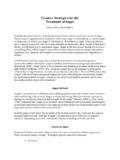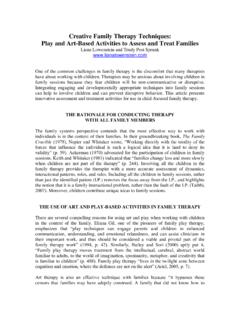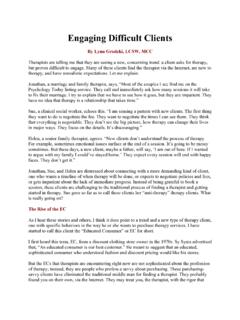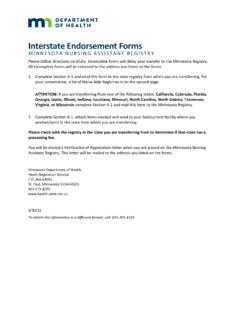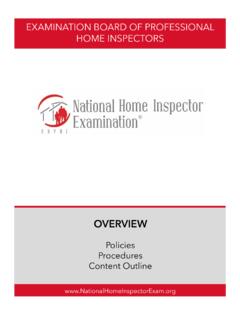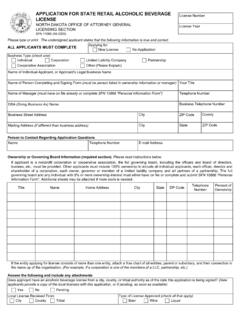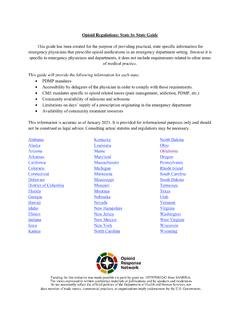Transcription of Favorite Therapeutic Activities for Children, Adolescents ...
1 Favorite Therapeutic Activities for Children, Adolescents , and Families: Practitioners Share Their Most Effective Interventions Edited by Liana Lowenstein, MSW. Copyright 2011 by Champion Press. All rights reserved. Except as indicated below, no part of this publication may be reproduced, stored in a retrieval system, or transmitted in any form or by any means, electronic, mechanical, photocopying, microfilming, recording, scanning, or otherwise, without the prior express written permission of the Publisher. Requests to the Publisher for permission should be addressed to Champion Press, PO. Box 91012, 2901 Bayview Avenue, Toronto, Ontario, Canada M2K 1H0, (416) 575-7836, Fax: (416) 756-7201. Worksheets may be reproduced only within the confines of the use with clients. This limited permission does not grant other rights, nor does it give permission for commercial, resale, syndication, or any other use not contained above.
2 Any other use, or reproduction, is a violation of international laws and is forbidden without the prior express written permission from the Publisher. Limit of Liability/Disclaimer of Warranty: While the publisher and authors have used their best efforts in preparing this publication, they make no representations or warranties with respect to the accuracy or completeness of the contents of this publication and specifically disclaim any implied warranties of merchantability or fitness for a particular purpose. No warranty may be created or extended by sales representatives or written sales materials. The advice and strategies contained herein may not be suitable for your situation. You should consult with a professional where appropriate. Neither the publisher not the authors shall be liable for any loss of profit or any other commercial damages, including but not limited to special, incidental, consequential, or other damages.
3 This publication is designed to provide accurate and authoritative information in regard to the subject matter covered. It is provided with the understanding that the publisher is not engaged in rendering professional services. If legal, accounting, medical, psychological or any other expert assistance is required, the services of a competent professional person should be sought. Designations used by companies to distinguish their products are often claimed as trademarks. In all instances where Champion Press is aware of a claim, the product names appear in initial capital or all capital letters. Readers, however, should contact the appropriate companies for complete information regarding trademarks and registration. Correspondence regarding this book can be sent to: Champion Press PO Box 91012, 2901 Bayview Avenue, Toronto, Ontario, Canada M2K 1H0.
4 Telephone: (416) 575-7836 Fax: (416) 756-7201. Email: Web: CONTRIBUTORS. Shlomo Ariel, PhD. Ramat Gan, Israel Email: Web: Katherine Arkell, MSW, LCSW. Bentonville, Arizona, USA. Email: Rinda Blom, PhD. Free State, South-Africa Email: Website: Donicka Budd, CYW. Toronto, Ontario, Canada Email: Website: Felicia Carroll, , MA. Solvang, California, USA. Email: Webpage: Angela M. Cavett, PhD, LP, RPT-S. West Fargo, North Dakota, USA. Email: Web: Jodi Crane, PhD, NCC, LPCC, RPT-S. Columbia Kentucky, USA. Email: Website: David A. Crenshaw, PhD, ABPP, RPT-S. Rhinebeck, New York, USA. Website: Gisela Schubach De Domenico, PhD, LMFT, RPT-S. Oakland, California, USA. Email: Web: Pam Dyson, MA, LPC, RPT. Ballwin, Missouri United States Email: Website: Abbie Flinner, MACC, NCC. New Castle, Pennsylvania USA. Email: iii Theresa Fraser, , BA, CPT.
5 Cambridge, Ontario, Canada Email: Diane Frey, PhD, RPT-S. Dayton, Ohio, USA. Email: Brijin Gardner, LSCSW, LCSW, RPT-S. Parkville, Missouri, USA. Email: Ken Gardner, ,R. Psych, CPT-S. Calgary, Alberta, Canada Email Web: Paris Goodyear-Brown, MSW, LCSW, RPT-S. Brentwood, Tennessee, USA. Email: Website: Steve Harvey, PhD, RPT-S, BC-DMT. New Plymouth, New Zealand Email: Katherine M. Hertlein, PhD, LMFT. Las Vegas, Nevada, USA. Email: Web: Deborah Armstrong Hickey, PhD, LMFT, RPT-S. Greenville, South Carolina, USA. Email: Web: Susan T Howson, MA, CPCC, CHBC. Port Credit, Ontario, Canada Email: Nilufer Kafescioglu, PhD. Istanbul, Turkey Email: Web: Susan Kelsey, , MFT, RPT-S. Costa Mesa, California, USA. Email: Sueann Kenney-Noziska, MSW, LISW, RPT-S. Las Cruces, New Mexico, USA. Email: Website: iv Norma Leben, MSW, LCSW, ACSW, RPT-S, CPT-P.
6 Pflugerville, Texas, USA. Email: Website: Kellen Lewis, MA. Frisco, Texas United States Email: Liana Lowenstein, MSW, RSW, CPT-S. Toronto, Ontario, Canada Email: Website: Greg Lubimiv, MSW, CPT-S. Pembroke, Ontario, Canada Email: Web: Evangeline Munns, PhD, CPsych, RPT-S. King City, Ontario, Canada Email: Adriana Ribas, PhD. Rio de Janeiro, Brazil Email: Website: Brandy Schumann, PhD, LPC-S, NCC, RPT-S. McKinney, Texas United States Email: Website: John W. Seymour, PhD, LMFT, RPT-S. Mankato, Minnesota, USA. Email: Angela Siu, PhD, CPT, CTT. New Territories, Hong Kong Email: Jodi Smith LCSW, RPT-S. Claremont, California, USA. Email: Website: Lauren Snailham, MA. Durban, South Africa Email: Web: Katherine Ford Sori, PhD, LMFT. Crown Point, Indiana, USA. Email: Trudy Post Sprunk, LMFT-S, LPC-S, RPT-S, PTI-S. Tucker, Georgia, USA. Email: Jacqueline M.
7 Swank, LCSW, RPT. Daytona Beach, Florida, USA. Email: Rajeswari Natrajan-Tyagi, PhD. Irvine, California, USA. Email: Tammi Van Hollander, LCSW, RPT. Ardmore, Pennsylvania United States Email: Website: Lisa Voortman, Dip Ed., DSBO. Cape Town, South Africa Email: Kelly Walker, , Melbourne, Australia Email: Lorie Walton, CPT-S. Bradford, Ontario, Canada Email: Website: Sharlene Weitzman, MSW, RSW, CPT-S. Belleville, Ontario, Canada Email: Website: Lorri Yasenik, MSW, RFM, CPT-S, RPT-S. Calgary, Alberta, Canada Email Web: Preface This publication provides a medium for practitioners to share their most effective assessment and treatment interventions. When I invited practitioners to contribute techniques to this publication, I was impressed with the range of creative interventions submitted. Clinicians from divergent theoretical orientations, work settings, or client specializations will find a wide range of creative and useable interventions in this book.
8 The interventions have been divided into three sections. The book begins with engagement and assessment Activities providing clinicians with interventions to engage with and evaluate clients. The second section presents treatment techniques to facilitate the working through of Therapeutic issues. The last section outlines interventions that can be incorporated as part of the client's termination process. A variety of Activities are provided within each section to enable practitioners to choose interventions that suit their clients' specific needs. Each technique outlines specific goals. Materials needed to complete the activity are listed. The eBook includes detailed instructions for all Activities and a discussion section that further clarifies application and process. Practitioners using the interventions in this publication should be well-trained in Therapeutic intervention with children and families.
9 A warm and caring rapport must be established with the client, and the Activities should be implemented using sound clinical principles. I hope this collection of interventions helps to create an engaging and meaningful Therapeutic experience for your clients. Liana Lowenstein ii Section One: Engagement and Assessment Interventions Boat-Storm-Lighthouse Assessment Source: Trudy Post Sprunk Published in Creative Family Therapy Techniques Edited by Lowenstein, 2010. Treatment Modality: Family Goals Gather information about the family, especially issues pertaining to danger and rescue Create an opportunity to express feelings such as fear, helplessness, hopelessness, bravery, etc. Identify ways to access support Materials Large sheet of white paper or poster board Markers Paper and pencil for each family member Advance Preparation Provide a large flat surface for the drawing activity.
10 Place the large sheet of paper or poster board so all family members can easily reach it. Arrange seating to insure privacy while writing. Description Explain to family members that they are to fill a poster board with one drawing of a boat, a storm, and a lighthouse. They are to complete the task silently. Upon completion, ask each to write a story about what he/she thinks happened before, during, and after the storm. A young child can quietly dictate a story to the therapist. After each person shares his/her story, the therapist guides the family in a discussion involving fears, rescue, danger, and how to access family support when needed. The therapist models acceptance of the diverse beliefs and experiences within the family. The therapist may help the family experience the process by exploring the following: 1. What do you think it would have been like to be in the boat with your family during the storm?
